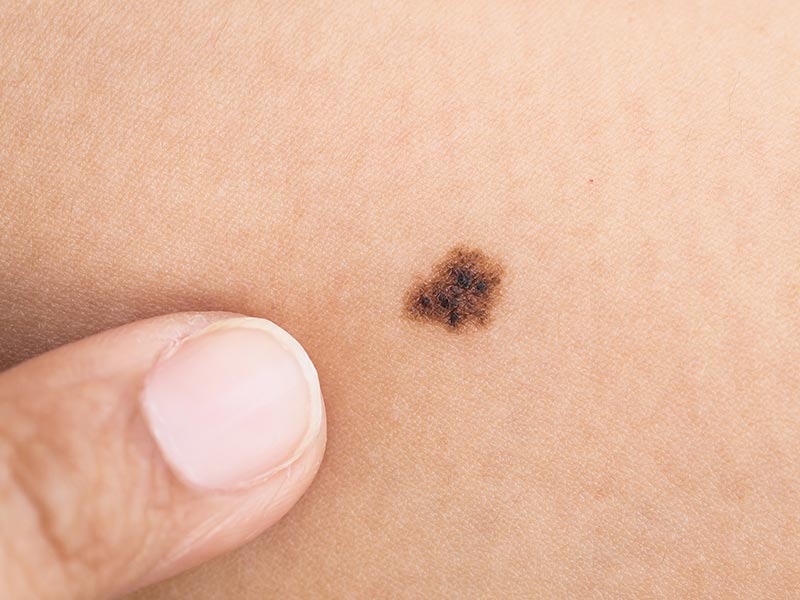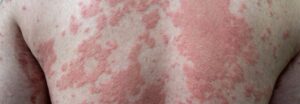Award winning dermatology service, with over 20 years on experience
Short waiting lists, on some occasions offering same week appointments
Safe environment, in Care Quality Commission approved facilities
Mole Treatments Include:
Mole SPECIALIST In Canterbury & Kent
At Canterbury Skin and Laser Clinic, our experienced skin specialists understand the importance of treating moles effectively and safely. We offer a variety of treatments to safely reduce the size or lighten the colour of moles, helping to improve their appearance on your skin. Our treatments can be tailored to fit your needs, such as freezing with liquid nitrogen for small raised moles, or laser for larger moles. All procedures are done by highly qualified practitioners in a clinical setting and we follow strict protocols of safety at all times. Contact us today to see how we can help you achieve smooth and clear skin.
Alternative names: naevus, nevus, junctional naevus, compound naevus, intra-dermal naevus, congenital melanocytic naevus, halo naevus, atypical naevus, dysplastic naevus, epidermal naevus, naevus sebaceous, naevus lipomatosus superficialis.


HOW CAN MOLES BE REMOVED?
At Canterbury Skin and Laser Clinic, mole removal is made simple. Our team of consultant dermatologists will assist you with the process by discussing the different treatment options available. An assessment of your mole’s location and appearance will be performed to determine which approach is best for you. Among the options include excision, open or closed shave biopsy, cutting diathermy and cryotherapy. For those looking for a less invasive option, there are topical creams that can also be used to gradually lighten and reduce their moles’ contrast with the skin surface. Regardless of the approach chosen, rest assured that our specialists provide safe and reliable treatments with great results.
MOLE REMOVAL
Some moles can be removed by laser treatment and if this option suits your condition you will be advised at the consultation. Laser mole removal is best suited for small moles and is a good option when the mole is on the face as there is less risk of scarring. This treatment to remove moles works by using intense bursts of light radiation to remove the cells which make up the moles and usually takes a couple of treatments to completely remove the mole.
SHAVE REMOVAL
Moles can be removed from the face and body using a shave removal technique which involves removing the mole using a scalpel. The treatment area will be numbed with anaesthesia and a small pink mark may be left where the mole once was, but this should fade over time.
EXCISION REMOVAL
Excision mole removal works by completely removing the mole by cutting it out, along with a small area of surrounding healthy tissue. This treatment is usually used to find out if the mole is cancerous. The area is treated with local anaesthetic and then the mole itself is removed along with a small area of normal skin. The wound is either stitched up or a skin graft is used to connect a patch of healthy skin from a hidden part of the body to the affected area.
Even if you’re having your moles removed purely for cosmetic reasons, we recommend that a histological analysis be carried out in order to identify any potentially dangerous cases that may require further treatment. When it comes to skin cancer, getting an accurate diagnosis is important, having your moles removed by a member of our specialist dermatology team will ensure that your mole will be removed quickly and efficiently.
FREQUENTLY ASKED QUESTIONS
HOW SHOULD I CHECK MY MOLES?
Most moles are completely harmless, but it’s important to check your skin regularly so that you can spot any changes in size, shape, or colour early and get them checked out.
The things to look out for when you’re checking your moles include:
- Colour: Uneven colours or changes in colour; most moles are just one colour, but melanomas are made up of lots of different shades.
- Size: Healthy moles don’t generally change size, so if you notice a mole getting bigger it’s important to have it checked out
- Edges: Most moles are usually circular or oval with smooth edges, so if your mole develops a rough or uneven edge it could indicate something more serious
- Irritation: Most moles will sit on your skin and not cause any problems, but if they turn red, start to itch, bleed, become inflamed or crusty see a specialist
A change in the size and shape of your moles doesn’t necessarily mean that you have developed melanoma; there are a variety of other reasons why your moles may be behaving that way. The most important thing to remember is to check your moles regularly, and if you are worried about any of your moles make an appointment to see a member of our team of dermatology specialists.
HOW OFTEN DO I NEED MY MOLES CHECKING?
We recommend an annual review of your moles to identify any changes which may have occurred since your last appointment. However those at risk of skin cancer might need to be seen more frequently than this. We will send you a reminder to book your annual check. If you notice any changes to your moles between appointments, please contact us to book a mole-check appointment.
HOW DO I KNOW WHICH MOLE REMOVAL TREATMENT IS RIGHT FOR ME?
During your consultation with a consultant dermatologist, your mole will be assessed and the right treatment option will be recommended for you. This will depend on the assessment and location of the mole.
Mole Treatment prices
- Single Mole Check with a Healthcare Assistant From £65
- Double Mole Check with a Healthcare Assistant From £100
- Full Body Mole Check with a Consultant Dermatologist From £295
- Mole Mapping with a Consultant Dermatologist From £385
REQUEST A CALL BACK
Please fill in this form and one of our team will give you a call back to arrange a consultation with one of our expert dermatologists.

What our Customers Say
WHY GET YOUR MOLES REMOVED AT THE CANTERBURY SKIN AND LASER CLINIC?
Here at Kent’s leading private skin and laser clinic, our mole specialists are experts in all aspects of dermatology, skin cancer, anti-ageing and beauty treatments. We are one of the few skin clinics in the UK where all medical consultations and treatments are provided by specialist doctors with Dermatology experience and laser training.
Canterbury Skin and Laser Clinic is regulated by the Care Quality Commission, ensuring the best level of treatment is provided to you in a safe environment. Our Clinical Lead Dr Mark Hudson-Peacock is a member of the British Association of Dermatologists, the British Laser Medical Association, the British Hair and Nail Society, the European Academy of Dermatology and Venereology and is certified by the Consulting Room. We have won many awards including the WhatClinic Patient Service Award in 2019 and the ghp Healthcare and Pharmaceutical Awards 2019.
Mole INSIGHTS AND ADVICE

Complete Fall Skincare Guide
Embrace the season of transformation – Autumn. With its vibrant hues, this magical time of year also brings unique challenges for your skin. As the crisp air sets in and the days grow shorter, it’s not only autumn we’re welcoming but also the reminder that

Comprehensive Guide to Understanding Eczema
October is globally observed as Eczema Awareness Month, drawing focus to the people grappling with this challenging skin condition. Our mission, not just in October but always, is to empower you with robust knowledge about eczema‘s root causes, various treatments and useful coping techniques. This

Unravelling Psoriasis: The Focus of Psoriasis Awareness Month
Each August, we commemorate Psoriasis Awareness Month, a time dedicated to elevating public understanding of psoriasis – a chronic skin ailment affecting countless individuals worldwide. The initiative is designed to dispel myths surrounding psoriasis, encourage early detection and advocate for impactful treatment methods. To those








